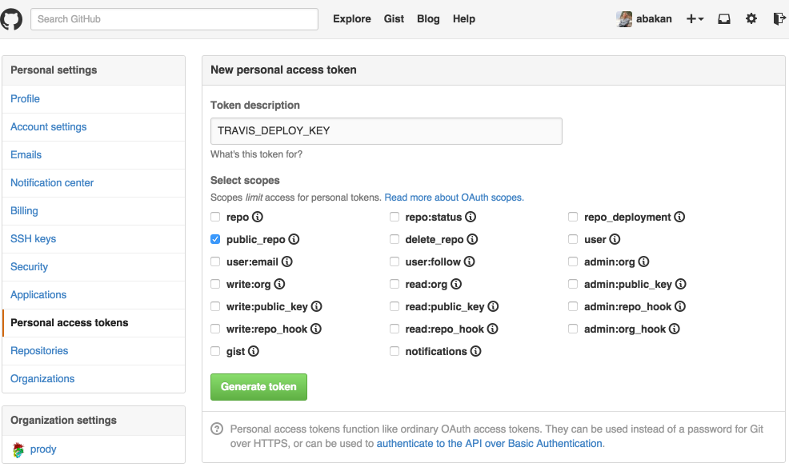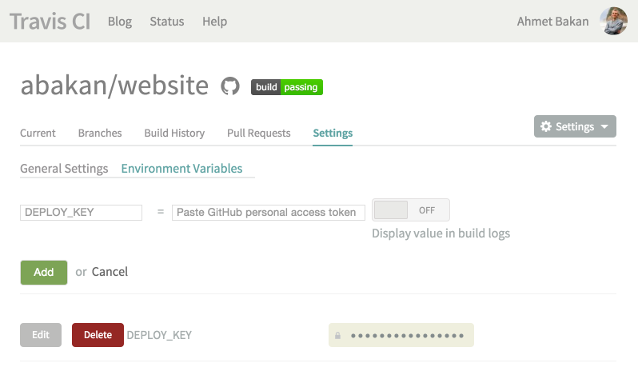Automate GitHub Pages Deploys¶
If being away from your personal computer is holding you back from blogging, keep reading. This post will show you how to automate builds and deploys using Travis CI. Once you set this up, all you need to do post an article will be pushing to GitHub or creating a new file on GitHub.com from any computer!
For this to work, you need to be hosting your website on GitHub pages. If you are not already doing so, see Deploy to GitHub Pages.
Sign up for Travis CI¶
Travis CI is a continuous integration service used to build and test projects hosted at GitHub. You can easily sync your GitHub projects with Travis CI signing up for Travis CI using your GitHub account:

Once you login, go to Accounts page and flick the switch on for your source repository for GitHub pages. In the below example, website is the source repository and sunpy.github.io contains HTML output from builds:

Deploy key setup¶
To have builds pushed from Travis CI to GitHub, you will need a personal access token. Go to GitHub page to generate a new token. You need only public repo access checked for this purpose:

Then, you need to set this access token as an environment variable, e.g. DEPLOY_KEY, under .
Keep the Display value in build logs switch off.

Also, do not forget to flick Build pushes on under :

Configuration file¶
Finally, you need a .travis.yml in your project that looks like the following:
language: python
python:
- 2.7
virtualenv:
system_site_packages: true
before_install:
- pip install ablog
script:
- ablog build
after_success:
- git config --global user.name "Your Name"
- git config --global user.email "yourname@domain.com"
- git config --global push.default simple
- ablog deploy --push-quietly --github-token=DEPLOY_KEY -m="`git log -1 --pretty=%B`"
The main part of the process, that is building of the website, is under script block.
If you repository has dependencies to other Python packages, you can install them in before_install block.
Upon a successful built, your website is deployed.
Note that there is no mention of your GitHub Pages repository, i.e. username.github.io.
That is specified in conf.py file with github_pages.
See Deploy to GitHub Pages and ABlog Commands to find out more about deploy options.
Finally, you can find out more about .travis.yml file and customizing your built on Travis CI user documentation.
